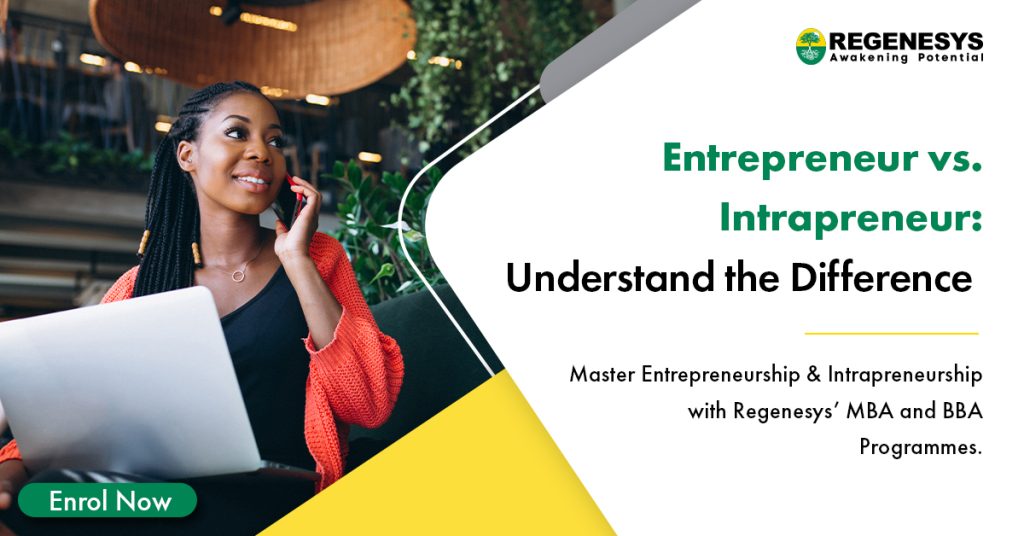Searches for “innovative entrepreneur” are usually about one thing: how people turn original ideas into value that customers pay for. This guide gives you a crisp definition, shows what innovation looks like in practice across different markets, and then hands you a practical 90-day plan to validate, launch, and scale, without needing huge capital.

What is an innovative entrepreneur?
An innovative entrepreneur is someone who creates and commercialises new value; whether that value is a product, a process, a business model, or a market entry strategy that materially improves how a need is met. Innovation is not just invention. Invention produces something new; innovation wins adoption. The innovative entrepreneur’s job is to reduce the distance between “this solves a real problem” and “customers are repeatedly paying for it.”
Innovation in entrepreneurship, defined
Innovation in entrepreneurship is the systematic practice of discovering unmet or poorly served needs, designing differentiated solutions, and building repeatable distribution so those solutions reach the right customers at the right moment. It can be:
- Product innovation (a novel feature or experience),
- Process innovation (faster, cheaper, safer ways to deliver),
- Business-model innovation (subscriptions, usage-based pricing, embedded finance),
- Market innovation (serving an overlooked segment or geography),
- Systems innovation (combinations of tech, partnerships, and regulation that unlock new value).
Why innovation matters now
Customers expect better, faster, more personal solutions. Cloud, mobile, and AI have collapsed the cost of testing ideas. Constraints like unreliable logistics, fragmented payments, or limited access to credit, often create the sharpest opportunities for innovation because solving them unlocks measurable value. That’s why emerging ecosystems in India, South Africa, the Philippines, Nigeria, and beyond produce compelling, locally-fit ventures.
The Innovative Entrepreneur Framework
Use this four-stage loop to move from idea to traction.
1) Identify
- Problem-hunting: Spend time where frustration lives; support inboxes, community groups, job boards, review sites.
- Jobs-to-be-Done: What outcome is the customer trying to achieve? What stops them? What do they hire now?
- Opportunity sizing: Estimate pain frequency, spend, urgency, and switching friction.
Deliverables: One-page problem brief; top three hypotheses; list of 10–15 interview targets.
2) Validate
- Problem interviews: 10–20 short calls; you speak 20% of the time, they speak 80%.
- Offer tests: Simple landing page + a clear promise + one call-to-action (waitlist, demo, deposit).
- Price tests: Anchor three price points; watch acceptance, not opinions.
- Pre-orders or pilots: Evidence beats enthusiasm.
Deliverables: Evidence table (quotes, sign-ups, pre-payments); a minimum viable promise; a go/no-go gate.
3) Build
- Minimum Lovable Product: Ship the smallest version that credibly delivers the promised outcome.
- Process over heroics: Document onboarding, support, and fulfilment so successes can repeat.
- AI-assist: Use AI to summarise interviews, draft onboarding flows, generate FAQs, and prototype interfaces quickly.
Deliverables: A usable v1, onboarding script, and a repeatable support workflow.
4) Scale
- Channels: Double down on the two channels with the lowest blended cost of acquisition.
- Partnerships: Piggyback on trusted brands and platforms; exchange value not just exposure.
- Moat: Accumulate hard-to-copy assets; data, network effects, community trust, and category positioning.
Deliverables: Channel dashboard (CAC, conversion, payback), partner pipeline, and a moat narrative.

Innovative entrepreneurship as a business opportunity for young entrepreneurs
If you’re early in your career, your edge is proximity to change: you see new behaviours first. You also suffer fewer sunk-cost biases and can iterate faster. Start small and specific, one painful task for one clearly defined group; then layer features and distribution once the core job is consistently solved. Lean tools, no-code, and AI let you build production-grade experiences on a student budget.
Where to look for ideas (country-aware)
- India: vernacular education, SME digitisation, logistics optimisation for Tier-2 and Tier-3 cities.
- South Africa: informal retail enablement, last-mile delivery reliability, SME access to finance and compliance.
- Philippines: cross-border services, remittance-adjacent products, community commerce.
- Nigeria: payments reliability, embedded credit, energy accessibility, mobile-first professional services.
Pick a wedge that you personally understand. Proximity drives insight; insight drives speed.
AI-powered entrepreneurship, practically
AI should compound your judgement, not replace it.
- Research: Summarise 50 reviews to extract “pain language.” Cluster complaints into themes to prioritise features.
- Prototype: Generate interface copy, onboarding checklists, and help centre drafts in minutes.
- Operations: Auto-tag inbound support, route priority issues, and draft responses that humans approve.
- Growth: Create variant ad copy, landing pages, and email sequences; A/B test weekly; keep the winners.
- Ethics and safety: Be transparent when AI is in the loop. Store only what you need; obtain consent; audit outputs.
Business models that fit innovative entrepreneurs
- Subscription (predictable revenue; align value with repeated outcomes).
- Usage-based pricing (fair to sporadic users; aligns cost to value).
- Marketplace take rate (only if you solve a hard, repeated trust problem).
- Embedded finance (insurance, payments, credit where it truly reduces friction).
- B2B SaaS with services (start with services to learn; harden learnings into software).
Three composite examples (how innovation looks in the wild)
These composites blend common patterns from real ventures to keep focus on the playbook.
Example 1: Informal-retail restocking app
Problem: Micro-retailers lose hours restocking and often overpay.
Innovation: A mobile app that batches orders, negotiates bulk rates, and coordinates shared delivery.
Why it works: Saves time and cash flow; data flywheel improves demand forecasting; suppliers get guaranteed volume.
Example 2: Mobile micro-insurance for gig workers
Problem: Income volatility and out-of-pocket risk.
Innovation: On-demand cover priced by shift hours, bundled at checkout inside a popular gig platform.
Why it works: Distribution piggybacks on an existing app; pricing feels fair; claims built into the workflow.
Example 3: Drone-enabled crop insights for small farms
Problem: Low yields due to late detection of pests and irrigation issues.
Innovation: Community-operated drones with an AI model that flags stress and prescribes low-cost interventions.
Why it works: Shared equipment lowers capex; farmers pay per scan; co-ops become distribution partners.

Distribution that does not need a big budget
- B2B2C partnerships: Integrate your offer where your users already transact.
- Community-led growth: Niche groups on WhatsApp, Telegram, or local forums beat broad social for early traction.
- Education as marketing: Host short clinics, webinars, or live demos that teach and sell at the same time.
- Influencer micro-collabs: Ten small credible voices often outperform one celebrity post.
- Proof over polish: Publish case notes, before-and-after screenshots, and ROI calculators.
Metrics that matter (and simple maths)
- Activation rate = activated users / sign-ups.
- Retention = users active in week N / users active in week 1.
- CAC (customer acquisition cost) = total marketing and sales spend / new customers.
- LTV (lifetime value) ≈ ARPU × gross margin × average customer lifespan.
- Payback period = CAC / monthly gross profit per customer.
Rule of thumb: Grow when LTV ≥ 3× CAC and payback ≤ 6 months for SMB; ≤ 12 months for enterprise.
Risks and how to build a moat
- Fast followers: Defend with brand, community, and proprietary data.
- Platform risk: Diversify channels; collect first-party contactable data; build direct relationships.
- Regulatory shifts: Engage early, document benefits, and design with compliance in mind.
- Single-point failure: Remove heroics; automate; cross-train; implement checklists.
A 90-Day Action Plan
Days 1–10: Problem discovery
Interview 15 prospective users; capture exact phrases; write a one-page problem brief. Publish your “build log” to attract early adopters.
Days 11–20: Offer test
Spin up a landing page with one promise and one call-to-action. Run £100 worth of tightly targeted ads or partner posts to test message–market fit.
Days 21–40: MVP
Deliver a working version that achieves the core outcome at least once per week for at least five users. Charge something, price tests are data.
Days 41–60: Distribution design
Choose two channels. Build a partner list of 30; book ten discovery calls; pilot with three. Launch a weekly insights email to your segment.
Days 61–90: Moat and scale
Instrument analytics, implement basic onboarding automation, and codify your differentiators into data and process. Publish a case note with measured outcomes.
Country snapshots: tailoring your wedge
- India: Design for vernacular languages, intermittent connectivity, and UPI-native payments.
- South Africa: Plan for mixed connectivity, multi-currency contexts, and trust-building with in-person touchpoints.
- Philippines: Prioritise mobile-first UX, social commerce, and remittance-friendly pricing.
- Nigeria: Optimise for payment reliability, offline flows, and agent networks.
Innovative entrepreneur examples (traits to emulate)
- Obsession with the customer’s job, not features.
- Relentless evidence-gathering: interviews, offer tests, price tests.
- Willingness to prune: kill features that do not move the core metric.
- Ethical compounding: privacy-aware data use and transparent AI.

FAQs
Is an entrepreneur an innovator?
Often, but not always. Entrepreneurs who innovate create and scale new value; others may operate proven models excellently. Both are valid, but innovation is the lever that unlocks outsized returns.
What drives entrepreneurs to innovate?
Persistent customer pain, constraints that create opportunity, personal curiosity, and the search for better unit economics. Strong innovators let evidence, not ego, drive decisions.
What is innovation in entrepreneurship (short definition)?
It is the disciplined process of discovering unmet needs, designing differentiated solutions, and building repeatable distribution so those solutions are adopted.
Your Next Move as an Innovative Entrepreneur
Innovative entrepreneurs turn uncertainty into a repeatable system: discover, validate, build, scale. Start with one painful job, deliver one clear outcome, and compound trust. The tools have never been more accessible; the bar for relevance has never been higher. Use the 90-day plan, measure what matters, and keep the loop turning.







